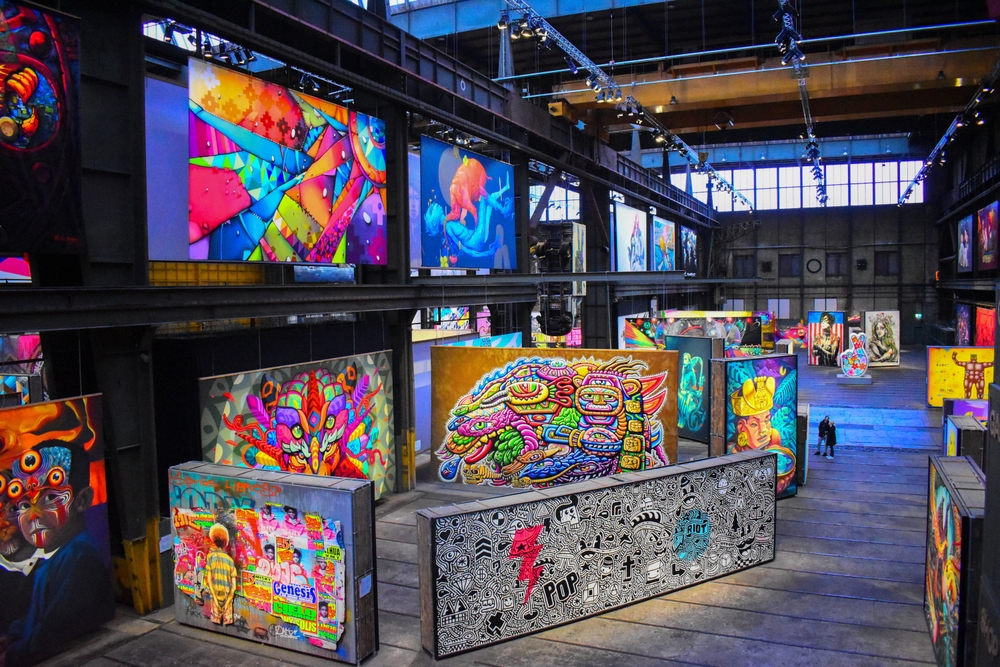The Metamorphosis of Meme Culture in Contemporary Art
In an era where digital expression reigns supreme, the fusion of internet culture and fine art has birthed a captivating new movement. Meme-inspired artwork is revolutionizing galleries, challenging traditional notions of artistic merit, and sparking debates about the nature of creativity in the digital age. This unexpected collision of high art and internet humor is reshaping the landscape of contemporary expression, forcing critics and audiences alike to reconsider the boundaries of artistic legitimacy.

From Pixels to Canvas: The Transformation of Digital Culture
The journey of meme-inspired art from computer screens to gallery walls represents a significant shift in the art world’s perception of digital culture. Early pioneers in this movement faced skepticism and dismissal from traditional art institutions, but their persistence has paved the way for wider acceptance. Today, renowned artists are incorporating meme aesthetics and references into their work, elevating internet culture to the status of fine art and blurring the lines between digital and physical realms.
The Language of Virality in Artistic Expression
Meme-inspired art harnesses the power of virality, leveraging the same mechanisms that propel internet content to widespread popularity. Artists in this genre often employ recognizable templates, catchphrases, and visual motifs from popular memes, recontextualizing them within their work. This approach not only creates an instant connection with viewers familiar with internet culture but also serves as a commentary on the rapid dissemination and evolution of ideas in the digital age.
Critiquing Society Through Meme-Inspired Art
Beyond its humorous facade, meme-inspired art serves as a powerful tool for social commentary and critique. Artists working in this genre often use the familiar language of memes to address complex issues such as politics, social inequality, and cultural phenomena. By couching serious topics in the accessible format of internet humor, these artists can engage audiences in meaningful discussions about contemporary society while maintaining a sense of levity and relatability.
The Democratization of Art Creation and Appreciation
The rise of meme-inspired art has contributed to a broader democratization of the art world. The accessibility of meme culture and the ease with which digital content can be created and shared have lowered the barriers to entry for aspiring artists. Additionally, the popularity of this genre has attracted new audiences to art galleries and museums, introducing a younger, more diverse crowd to the world of contemporary art. This shift challenges traditional notions of artistic elitism and opens up new possibilities for creative expression and appreciation.
Challenges and Controversies in Meme-Inspired Art
As with any emerging art movement, meme-inspired art faces its share of challenges and controversies. Questions of copyright and fair use arise when artists incorporate existing memes or viral content into their work. The ephemeral nature of internet culture also poses challenges for the longevity and relevance of meme-inspired pieces. Critics argue that the genre lacks depth and originality, dismissing it as a passing trend. However, proponents counter that meme-inspired art reflects the zeitgeist of the digital age and serves as a valuable cultural artifact.
The Future of Meme-Inspired Art in the Contemporary Landscape
As meme culture continues to evolve and permeate various aspects of society, the future of meme-inspired art appears bright and full of potential. The genre’s ability to adapt to new trends and technologies suggests that it will remain relevant and continue to push the boundaries of artistic expression. As more established institutions embrace this movement, we can expect to see increased dialogue between traditional art forms and internet-inspired creativity, potentially leading to exciting new hybrid genres and modes of expression.
Redefining Artistic Boundaries in the Digital Age
The emergence of meme-inspired art represents a significant shift in the contemporary art landscape, challenging long-held notions of artistic value and expression. By embracing the language and aesthetics of internet culture, artists are creating works that resonate with a new generation of art enthusiasts while providing commentary on our increasingly digital world. As this movement continues to grow and evolve, it promises to play a crucial role in shaping the future of artistic expression and cultural dialogue in the 21st century.




